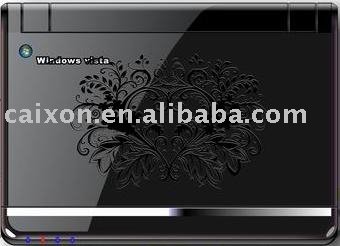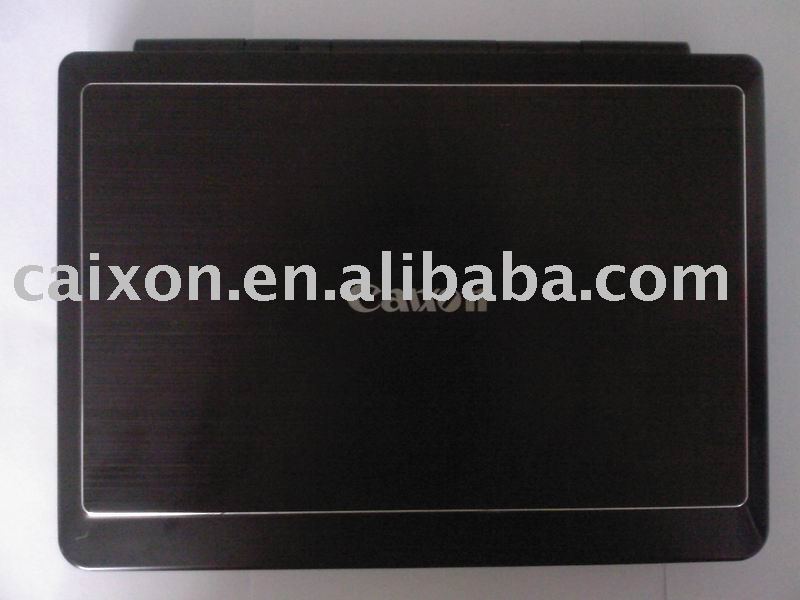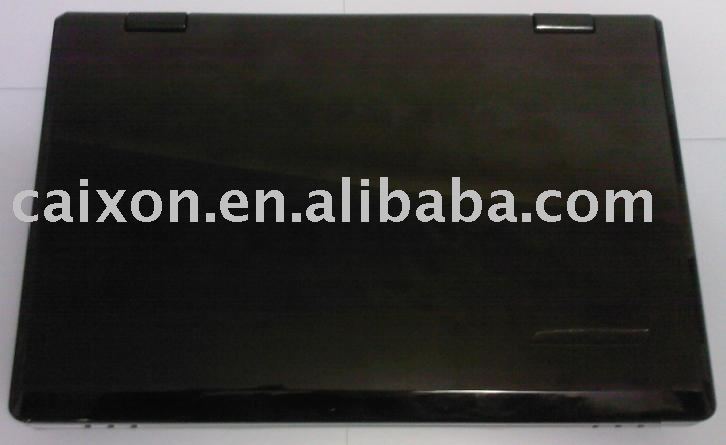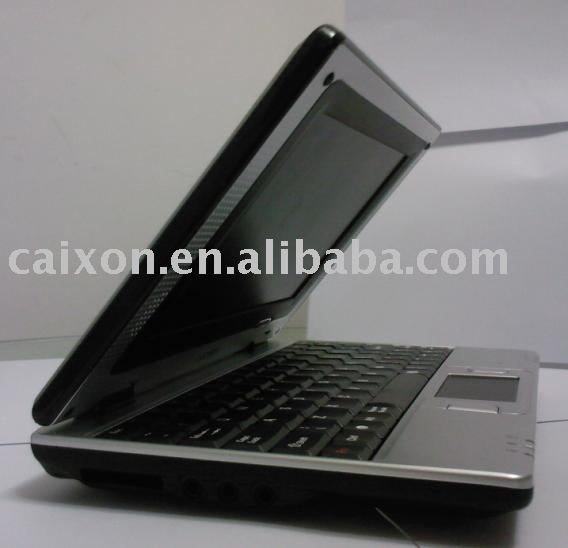by Jamie BsalesPrice as Reviewed $1,454.80 - $1,945.79
CPU: 2.5-GHz Intel Core 2 Duo T9300
Hard Drive Size/Speed: 250GB/5,400 rpm
Graphics/Video Memory: Nvidia Quadro NVS 130M/256MB
Screen Size: 15,4inch
The Toshiba Tecra A9-S9021V aims to deliver durability and performance to mainstream corporate notebook users who prefer the larger screen and keyboard a 15.4-inch system delivers. It is largely successful in its mission, though the execution is uninspired. For $1,699 you get a high-resolution display, a large hard drive, and discrete graphics, but this system’s overall performance and design make it second-rate compared to the best business machines from Dell, HP, and Lenovo.
Design
With the Tecra A9, Toshiba took an old-school approach to addressing the corporate notebook market: Make it as bland as possible so as not to offend anyone. While the gray and black plastic chassis would be appropriate for a sub-$1,000 machine, at the Tecra A9’s price, we’d like to see richer materials. The machine is the typical size for a 15.4-inch notebook, but a little more effort could have gone into shaving some bulk. In fact, at 14.4 x 10.6 x 1.5 inches and 6.4 pounds, the Tecra A9 is nearly identical in size and weight to the new Sony FW Series—which has a screen that’s an inch larger.
The full-size keyboard feels comfortable enough in use, with good key travel and appropriate audible feedback. It’s also spill-resistant to help protect the machine from errant liquids. As with other corporate notebooks, you’ll find both a touchpad and a pointing stick. Unfortunately, the pad is right out of the bargain bin, with a plastic feel and a surface area that’s way too small (and square) given the screen’s dimensions. The touchpad’s mouse buttons are on the tiny side, too, even though there’s plenty of room for larger buttons. And while we appreciate the volume wheel jutting from the front edge of the system, a dedicated mute button would be a step in the right direction.
Display and Multimedia
The 15.4-inch screen of the Tecra A9 is a highlight. High-res purists will appreciate the panel’s 1680 x 1050-pixel resolution, which delivers crisp text and fits at least a couple of open windows on the screen. Of course, most default text in applications and lists (like Windows’ All Programs roster) is tiny. Fortunately, Toshiba has thought of this and included its Zooming Utility to adjust icon sizes and zoom application windows in Microsoft Office, Adobe Reader, and Internet Explorer automatically.
As is appropriate for a business notebook, the panel has a glare-reducing satin finish that effectively cuts glare and reflections, though (predictably) we saw some dulling of colors in DVD playback and games. Scenes in Pirates of the Caribbean: The Curse of the Black Pearl also showed motion blur and loss of detail in shadow areas. The built-in stereo speakers deliver enough volume for making a presentation around a conference table but offer tinny sound lacking in bass.
Features
The Tecra A9 platform has all the ports expected of a corporate notebook, including four USB ports, VGA, FireWire, Ethernet, modem, and even a serial port. Missing is an HDMI port, which is becoming a common way to connect to external displays. There’s a PC Card slot and a 5-in-1 memory card reader, but no webcam. The bottom dock connection accepts the Toshiba Express Port Replicator, and a VGA- or DVI-equipped Dynadock solution can connect via USB.
Manageability and Security
Of course, with a corporate notebook you aren’t paying for multimedia prowess, you’re paying for a stable, manageable platform that offers security and durability. And on those counts, the Tecra A9 delivers. It has a fingerprint reader and Trusted Platform Module (TPM) 1.2, along with Infineon’s TPM Software Package, which lets IT departments manage security policies for the machine. Toshiba has also included a SmartCard reader for companies that employ those security devices.
In addition to the spill-resistant keyboard, the Tecra A9 has Toshiba’s EasyGuard durability features. These include shock-resistant mounts and active protection for the 250GB hard drive, as well as shock-absorbing materials for the chassis and LCD panel and inverter.
Smart Utilities
The i hard key to the left of the keyboard launches the Toshiba Assist utilities menu. Clicking the Connect entry brings up and icon for Toshiba’s ConfigFree utility, which helps users see and set Ethernet, Wi-Fi, dial-up, and Bluetooth connections. The Secure menu choice lets administrators set a password to restrict users’ access to hardware setup programs, and also check current security settings (BIOS password, hard-drive password, fingerprint authentication) and TPM settings. The Protect & Fix entry in Toshiba Assist offers a basic hardware diagnostic tool (for checking the health of the CPU, memory, hard drive, and other components) and also lets a user or an administrator set the sensitivity level for the active hard drive protection. The Optimize choice contains the zooming utility settings, as well as a CD/DVD drive acoustic silencer, which is supposed to lower the spin rate of the optical drive during movie and music playback to make the noise less intrusive (though we didn’t hear a difference with the drive set to Silent mode).
Mediocre Performance
The Tecra A9 is built on the Centrino Pro platform, not the newer Centrino 2 architecture (with its faster frontside bus and other enhancements), so its performance doesn’t match that of some newer machines we’ve tested. The 2.5-GHz Intel Core 2 Duo processor, 2GB of RAM (expandable to 4GB), and discrete 256MB Nvidia Quadro NVS 130M graphics (that company’s stable, IT-friendly GPU family) delivered acceptable speed.
The Tecra A9 boots to Windows Vista Business in less than a minute, which is refreshingly quick. However, its score of 2,869 on PCMark Vantage is about 7 percent below the average among other mainstream notebooks we’ve tested. Its internal data-transfer rate of 14.9 MBps is okay but not great. Still, the Tecra A9 didn’t miss a beat while multitasking; we were able to apply filter effects to a photo in Picasa, play music in Windows Media Player, and download a file via Internet Explorer in the background with no blips in the foreground tasks.
Low graphics scores of 2,936 on 3DMark03 and 860 on 3DMark06 indicate a lack of gaming ability after business hours. Indeed, the Tecra A9 mustered an unplayable 11 frames per second on F.E.A.R. at 1024 x 768-pixel resolution; you’ll have to dial back the effects and resolution still further to game when work is done.
Battery Life, Wireless
Our test unit came with the standard six-cell battery, which lasted only 2 hours and 31 minutes on the LAPTOP Battery Test. HP’s EliteBook 6930p, which we also tested with a six-cell battery, lasted an hour longer. If the A9 will see life beyond the desktop, opt for the available nine- or twelve-cell battery. In wireless testing, the 802.11a/g/n connection delivered above-average throughput at 15 feet from our access point (19.9 Mbps) but below-average throughput at 50 feet (12.5 Mbps).
Software and Warranty
As for other software, Toshiba has included a 60-day trial to Norton 360, as well InterVideo WinDVD to handle DVD playback. You also get Toshiba Disc Creator and Ulead DVD MovieFactory (the OEM version). A three-year warranty comes standard with the Tecra A9; users can purchase extra coverage including SystemGuard Accidental Damage Coverage, which provides advanced protection from damage due to handling, and can also opt to have it serviced on-site.
Toshiba Tecra A9-S9021V Verdict
At the end of the day, there’s nothing wrong with Toshiba’s Tecra A9-S9021V. It’s a solid option for IT departments that are committed to Toshiba’s corporate platform and need a large-screen offering for users who seldom travel. At $1,699, however, it’s significantly more expensive than competing systems like the Lenovo ThinkPad R500, which offers better speed and battery life. The Tecra A9 has all the features and performance to get the job done, but it’s not the best choice.
[+/-] Read moore...
[+/-] Back...
 by Daniel Robinson
by Daniel Robinson










































